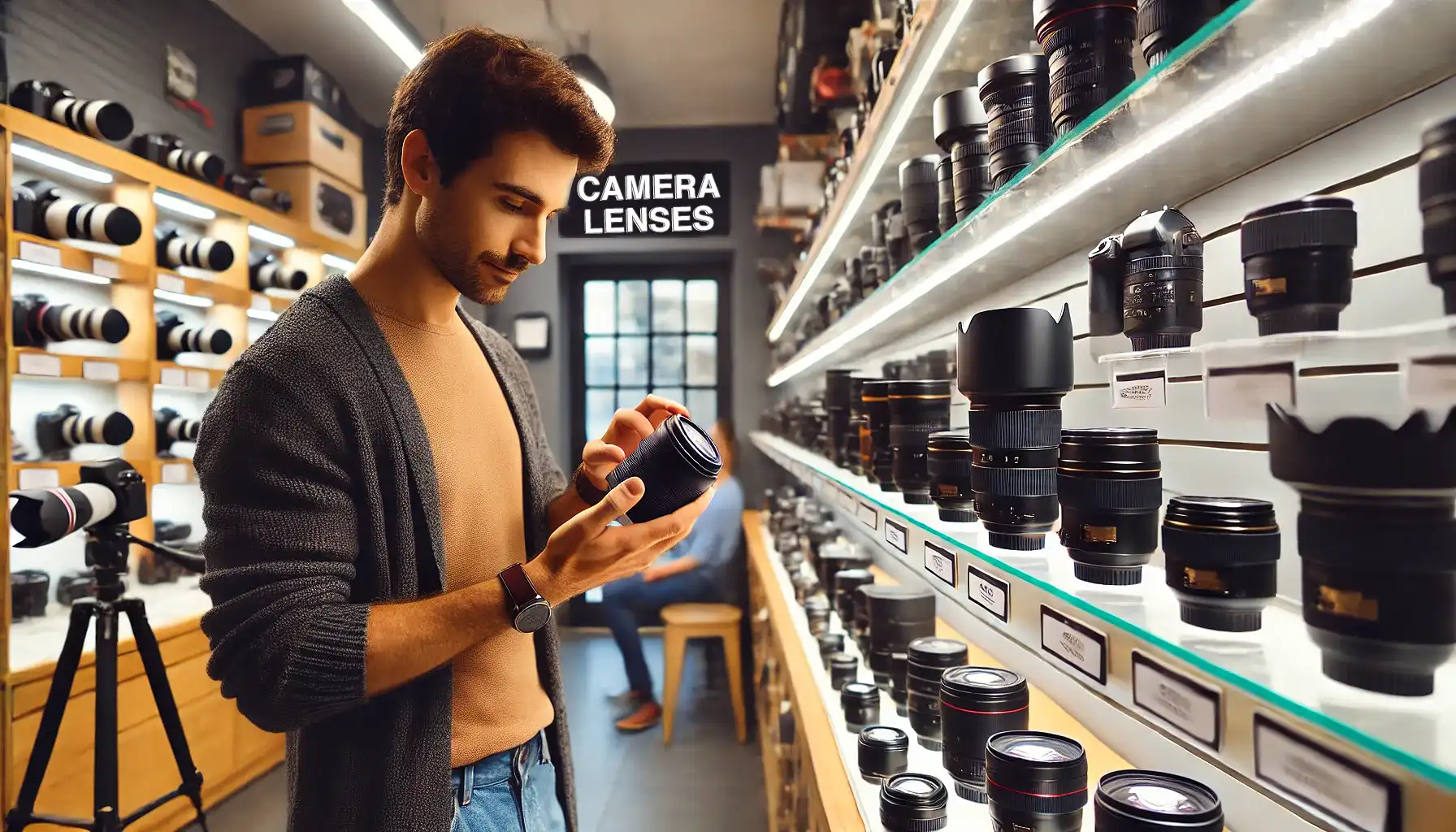
Are you struggling with how to choose which camera lens to buy? You’re not alone. Navigating the intricate world of photography gear can be overwhelming, with countless options that may leave you paralyzed.
Imagine the satisfaction of snapping a photo that perfectly captures your vision, thanks to the lens you carefully selected. Let me guide you through the essentials, demystifying technical terms and focusing on what truly matters for your needs.
We’ll explore important factors like focal length, aperture, and compatibility so you’ll feel confident in your decision. Let’s enhance your photography experience with the perfect lens choice!
Table of Contents
How to Choose Which Camera Lens to Buy
When selecting a camera lens, it’s important to first assess your photography needs. Understanding how to choose which camera lens to buy will help you determine what to consider based on your style and the subjects you enjoy capturing.
Understanding Your Photography Needs
Identifying your photography needs is an important step in selecting the right equipment. In this section, we’ll explore the different types of lenses available, each designed to suit various styles and subjects, including landscape photography.
Additionally, knowing whether you prefer a prime vs. zoom lens can help refine your options.
Types of Camera Lenses
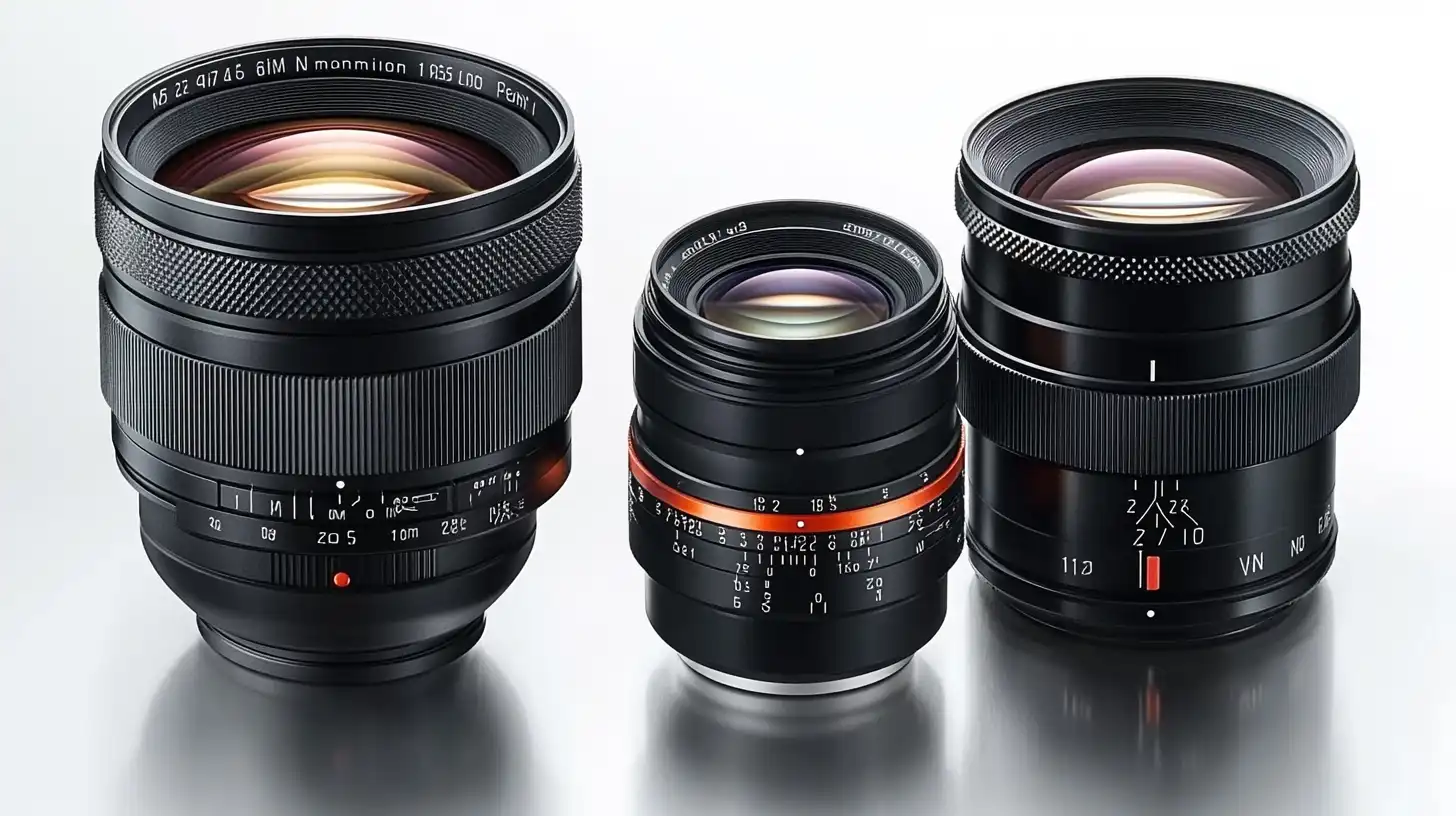
There are several types of camera lenses to consider:
- Prime Lenses: These have a fixed focal length, offering better image quality.
- Zoom Lenses: These provide versatility with different focal lengths, allowing adaptability in various scenarios.
- Macro Lenses: These enable the capture of detailed close-ups.
- Wide Angle Lenses: These are best for large-scale scenes.
When choosing, it’s important to know that prime and zoom lenses serve different purposes. Prime lenses are typically smaller than zoom lenses and may suit those who prefer carrying lightweight gear.
Budget Considerations
Setting a budget before exploring options is important when learning how to choose which camera lens to buy. Consider getting a versatile zoom lens if you’re starting out.
Compare prices between retailers and keep an eye on sales and discounts. Budget is an important factor as camera lenses can vary widely in cost. A kit lens provides a budget-friendly option for beginners wanting flexibility without overspending.
Researching Lens Reviews
To make an informed decision, gather information through reviews. Read online reviews for user experiences, watch video comparisons to see lenses in action, consult forums for insights and opinions, and pay attention to pros and cons shared by other photographers.
Real user feedback provides helpful insights, especially with concerns about lens quality or compatibility with your camera body.
Pro Tip: Always check if the lens includes image stabilization, especially if shooting in low light. This feature significantly enhances photostability.
Additionally, understanding the difference between RAW or JPEG format can influence how you post-process your images.
How to Choose Which Camera Lens to Buy: Camera Lens Basics
Choosing the right camera lens is important. It’s not rocket science, but knowing the basics can help you choose the right camera lens and prevent blurry images and wasted money.
Prime vs. Zoom Lenses
Prime lenses are specialized and reliable, offering the highest image quality with a prime lens. In contrast, zoom lenses provide flexibility by covering a range of different focal lengths, making them adaptable for various photography situations.
Main Differences
Here are the main differences between prime and zoom lenses to help you decide which type best suits your photography needs:
- Prime Lenses: Prime lens, high image quality.
- Zoom Lenses: Variable focal lengths, flexible use.
Focal Length Explained
The focal length decides the focus area in an image. The ultra-wide lens captures vast landscapes, perfect for sprawling vistas or your room after tidying up.
Focal lengths vary; wider means more scene captured, like those ridiculous group selfies. Longer focal lengths bring in distant subjects, which is ideal for spotting the neighbor’s cat as a secret agent.
Focal Length Types
Below are the different focal length types and their uses to help you choose the right lens for your photography:
- Wide Angle: Captures more of the scene, great for landscapes.
- Long Focal Length: This brings distant subjects closer, ideal for wildlife or sports, making them some of the best wildlife photography lenses.
Aperture and Depth of Field
The aperture controls how much light enters the lens. Smaller numbers mean a wider aperture, resulting in a shallow depth of field that makes backgrounds artistically blurry.
Aperture Insights
Here are important insights on aperture settings and their effects on exposure and depth of field:
- Wide Aperture (Small f-number): More light, shallow depth of field.
- Narrow Aperture (Large f-number): Less light, greater depth of field.
Lens Mount Compatibility
This is where the camera body meets the lens, and it’s important that they are compatible.
Different camera manufacturers have unique mounts, so a Nikon lens won’t work with a Canon body unless you use an adapter.
Compatibility Tips
Here are some compatibility tips to ensure your lens will work with your camera:
- Check manufacturer compatibility before purchasing a lens.
- Consider adapters if mixing brands.
Pro Tip: Invest in a good prime lens for low-light situations and sharper images. They are excellent for portrait photography and often more affordable than you might expect.
For those diving deeper into the world of photography, understanding the difference between Photoshop and Lightroom is significant for post-processing your images.
Additionally, knowing how to choose which camera lens to buy can significantly enhance your photography experience.
How to Choose Which Camera Lens to Buy: Zoom Lens Advantages
If you’ve ever been curious about what makes professional photos so impressive, you’re in the right place. Instead of limiting yourself to a single focal length, you can take advantage of the flexibility that multiple focal lengths provide.
Versatility of Zoom optics
One of the standout qualities of a zoom lens is its versatility. With a simple turn of the wrist, you can transition from capturing wide landscapes to sharp close-ups.
Imagine standing on the edge of a cliff, capturing the vastness using wide-angle settings, and the next moment, zooming in to see a distant bird’s feather details.
Unlike prime lenses, which demand lens swaps for each scene, zoom lenses allow rapid adaptability. This adaptability makes it the go-to for event photographers who need to shift perspectives in seconds.
Common Zoom Lens Ranges: Insights on How to Choose Which Camera Lens to Buy
Here are some common zoom lens ranges to help you understand the options available and choose the right lens for your photography needs:
- The beauty of zoom optics is also in their variety of focal lengths. From 18-55mm kit lenses that come with many DSLR cameras to more specialized telephoto lenses ranging from 70-200mm or even more formidable options, the choices cater to varied needs.
- The 24-105mm range serves beautifully for general use, while a 70-300mm telephoto lens might attract wildlife enthusiasts.
- For the wide-eyed amongst us, ultra-wide angle lenses also make a list, offering expansive views often required in landscape photography.
The choice of focal lengths demands consideration of what you aim to photograph and your style. Equip yourself with the understanding that these zoom ranges adjust not just the magnification but also the narrative of every frame.
When to Use a Zoom Lens
Knowing when to employ a zoom lens depends on the scenario:
- Sports events, where subjects are in constant motion, benefit immensely from telephoto lenses.
- Wide-view lens settings capture comprehensive views with details when standing amidst architectural marvels.
- On spontaneous travel journeys or impromptu outings, having an adaptable zoom lens means fewer equipment changes and more creative opportunities.
Here’s a helpful piece of advice: Keep your camera body steady to minimize vibration. Image stabilization within many zoom lenses guarantees clearer shots, even in less controlled environments.
Pro tip: For those looking to enhance their photography skills further, learning about Lightroom shortcuts can significantly speed up your editing process, allowing you to perfect those zoom optics captures with ease.
Additionally, understanding how to zoom in on Adobe Photoshop for beginners can further improve your post-processing skills.
Choosing Between Zoom Lenses: How to Choose Which Camera Lens to Buy
When selecting zoom optics, understanding the differences in image quality is important. This section will explore how various factors can impact the performance and clarity of your shots, helping you make an informed choice.
Comparing Image Quality
Image quality is important when it comes to zoom optics. Sure, everybody wants sharp images, but how do zoom lenses measure up against prime lenses? Many will say prime lenses have the upper hand.
However, zoom optics are not merely secondary options. They deliver impressive performance, particularly in the mid-range focal lengths, providing excellent optical quality.
For an old-school DSLR camera or even those fancy mirrorless cameras, zoom lenses deliver versatility and ease. Handy for both amateurs and pros. Of course, keep in mind that a good prime lens can edge out zooms on crispness if that’s what you’re shooting for.
Weight and Portability
Zoom lenses typically weigh more than prime lenses because of their complex mechanics.
A wide-angle zoom lens can be a great choice for hikes or long city walks, providing versatility without excessive weight.
DSLR cameras paired with lenses offer solid performance, while mirrorless cameras are even more portable due to their compact design.
It’s important to consider your comfort and convenience when selecting a lens, as photography should be enjoyable rather than physically taxing.
Price vs. Performance: How to Choose Which Camera Lens to Buy
Price tags cause cold sweats, yet performance whispers sweet promises. While prime lenses might seem affordable, zoom lenses provide varied focal lengths with greater adaptability, thus cost-effectiveness and flexibility.
Determining if features like image stabilization or enhanced low-light performance are worth the investment is an important step in the decision-making process. Make sure to review the specifications thoroughly before making a purchase.
Exploring Different Camera Lenses to Help You Decide How to Choose Which Camera Lens to Buy
Let’s uncover what makes each type unique and useful for photography enthusiasts, from the casual snap-shooter to the budding pro. You’ll walk away knowing how to choose which camera lens to buy for every occasion.
To help you make an informed decision, here’s a comparison of various types of camera lenses.
| Aspect | Overview |
|---|---|
| Macro Lenses | Designed for capturing small details, ideal for close-ups of insects and flowers. |
| Wide-Angle Lenses | Great for capturing expansive landscapes and ensuring everything fits in the frame. |
| Telephoto Lenses | Ideal for action shots, bringing distant subjects closer, perfect for sports and wildlife. |
| Specialty Lenses | Provide unique effects for creative experimentation, such as fisheye or tilt-shift perspectives. |
Macro Lenses for Close-Up Photography
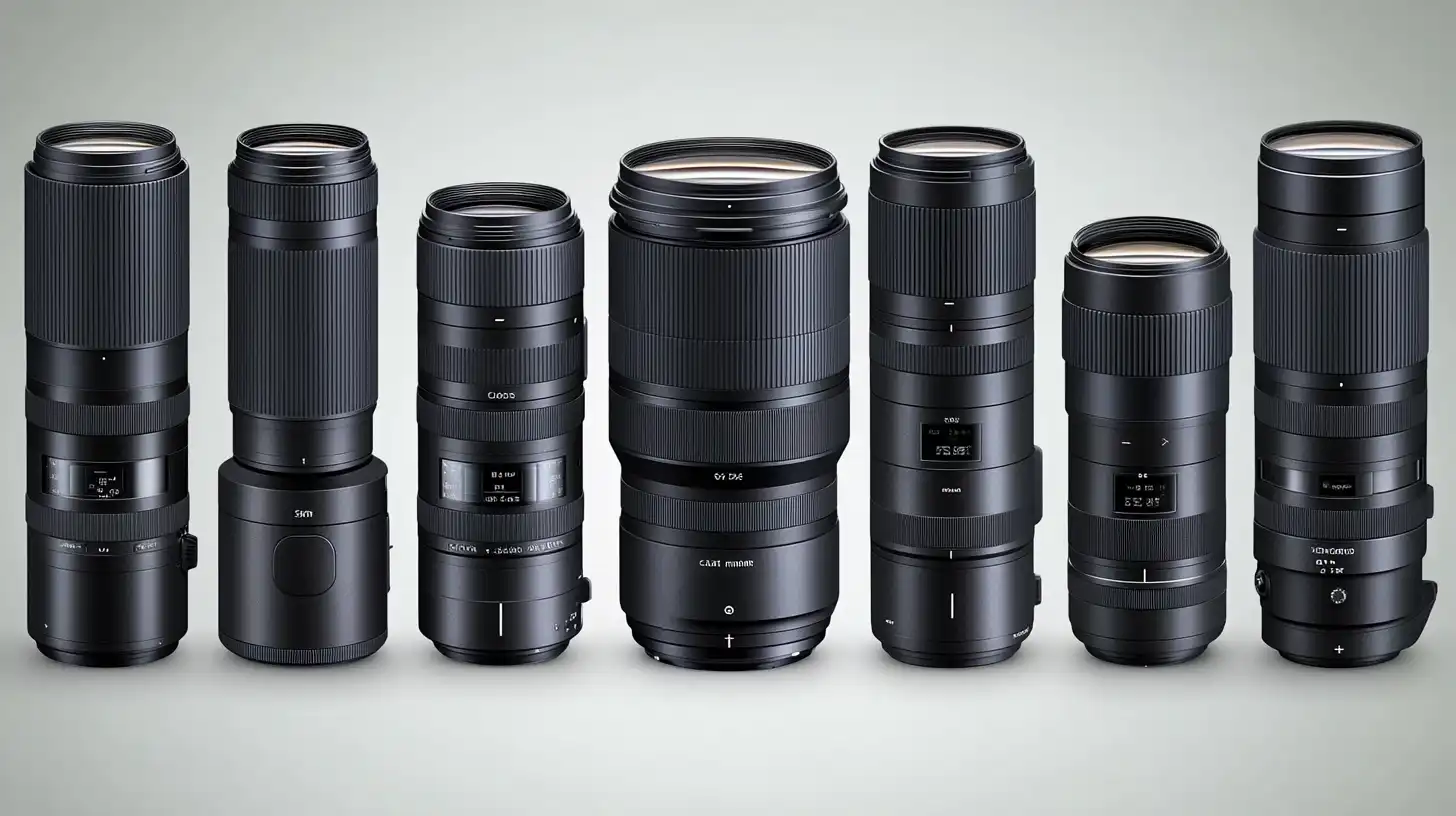
They capture the small details, bringing life-sized subjects into focus. Perfect for nature lovers snapping insects or flowers. A macro lens helps highlight intricate patterns, allowing every feature to pop.
Wide-Angle Lenses for Landscapes

Nature can be vast and breathtaking, making it significant to own a wide-angle lens. Ideal for capturing those endless horizons and expansive skies.
A wide-angle lens ensures everything fits within your frame majestically. Whether on a mountain top or walking through urban streets, it’s like giving viewers a panoramic treat.
Telephoto Lenses for Action Shots
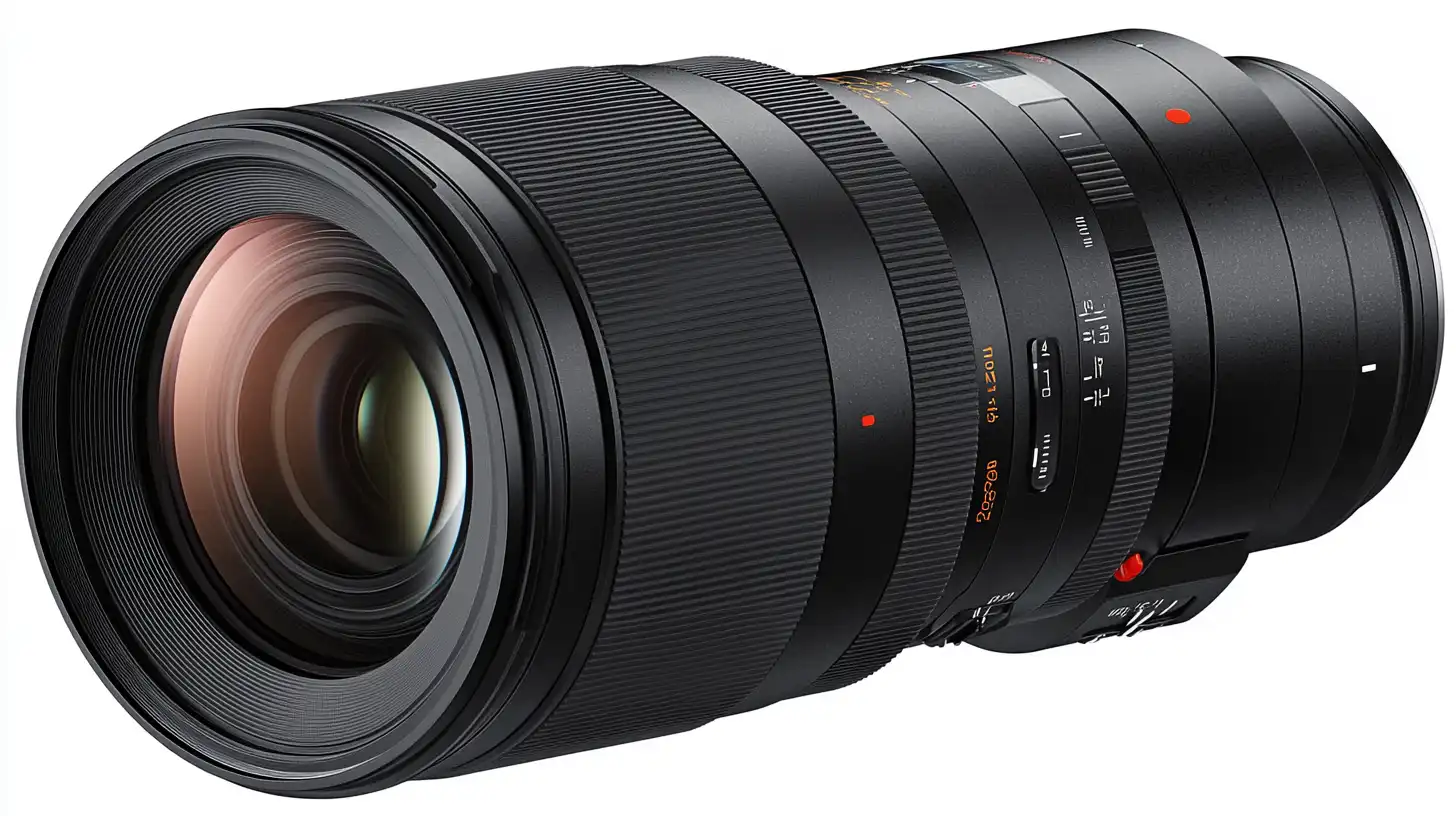
Crafted for excitement, telephoto lenses are for dynamic activity lovers. Imagine shooting sports events where speed and distance matter or wildlife safaris revealing majestic animals like a pro photographer.
These top telephoto lenses feature powerful focal lengths that bring the action closer, freezing every exhilarating moment in time.
Specialty Lenses for Creative Effects
If creativity is your playground, specialty lenses are your go-to buddies. They offer artistic effects and surprises galore. Ever tried a fisheye lens for wacky perspectives? Or maybe tilt-shift lenses for dreamlike images?
These lenses provide opportunities for creative experimentation and can transform your perception of reality.
Selecting the Right Camera Lens
Choosing camera lenses need not be daunting, especially when you understand how to choose which camera lens to buy.
Remember, whether it’s an APS-C or full-frame sensor, each lens serves a unique purpose, detailing different focal lengths and zoom ranges.
Consider whether your choice requires a prime lens for fantastic clarity or versatility with interchangeable ones. We’re here to demystify all options so that when you choose the right camera device or approach, you do so confidently.
Pro Tip: If Photoshop or Lightroom is your game, use macro lens shots to create a stunning series through photo stacking. More detail than ever awaits in those layers.
Frequently Asked Questions
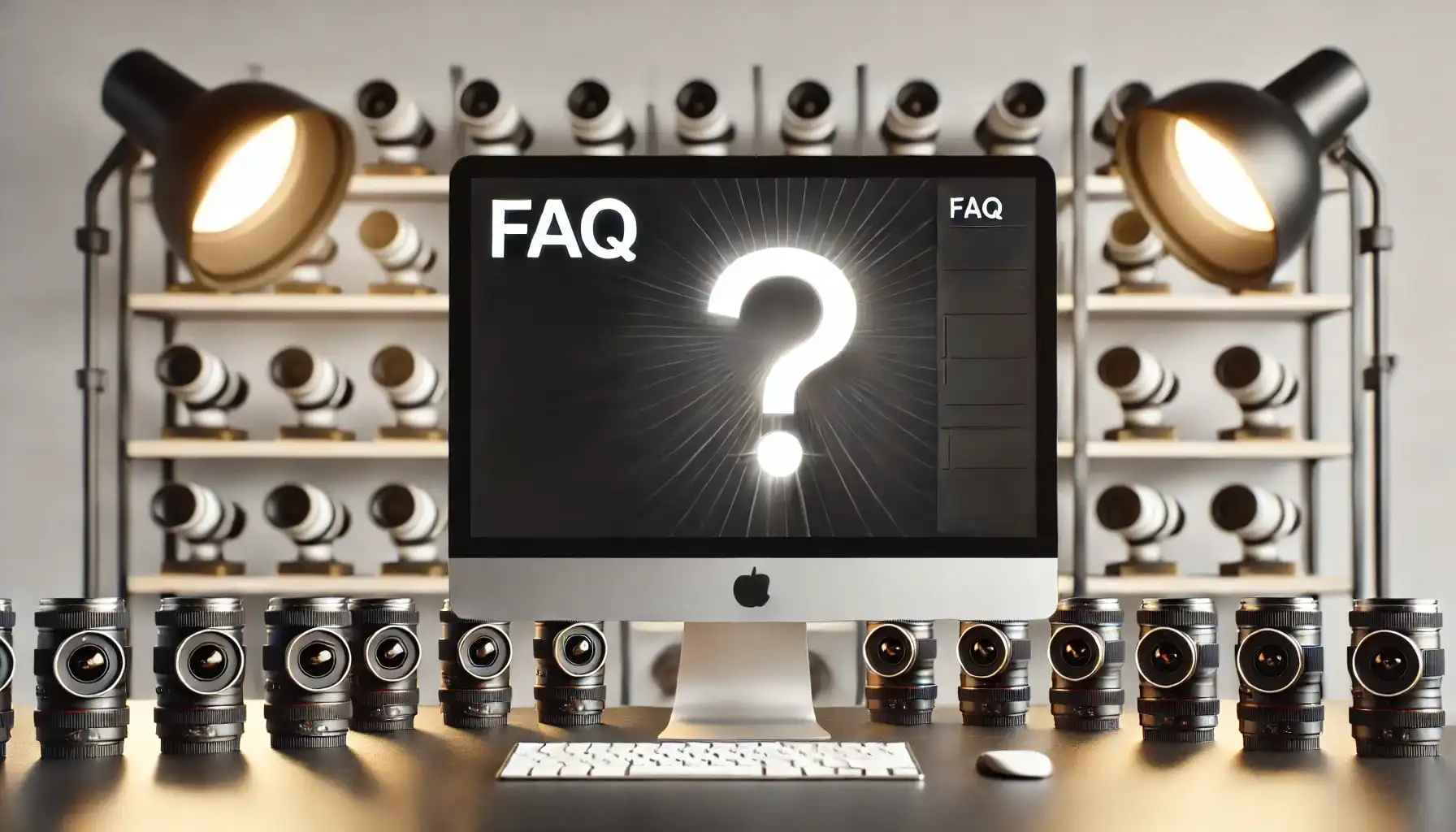
How to Pick a Camera Lens?
- Consider the type of photography you enjoy (e.g., landscapes, portraits, sports).
- Look for lenses with focal lengths that suit your photography style.
- Check lens compatibility with your camera model.
- Read reviews and watch tutorials to understand lens performance and quality.
How Do I Know What Lens Fits My Camera?
- Check your camera's mount type (e.g., Nikon F-mount, Canon EF-mount).
- Refer to your camera's manual for compatible lens recommendations.
- Visit the manufacturer's website for a list of compatible lenses.
- Consult with camera store professionals or online forums for advice.
What Camera Lens Should Every Photographer Have?
- A standard 50mm lens, known for versatility and suitable for a variety of shots.
- A wide-angle lens for capturing landscapes and architectural photography.
- A telephoto lens for wildlife and sports photography, allowing for distant shots.
- A macro lens for detailed close-up photography.
How Do I Know What Size Lens to Buy?
- Understand the term 'focal length', which is measured in millimeters and determines the lens' field of view.
- Choose a lens size based on what you primarily photograph (e.g., wide-angle for landscapes, telephoto for distant subjects).
- Consider the size and weight of the lens for portability and comfort.
- Balance your budget with your needs, as lens prices can vary widely based on features and quality.

Conclusion
Choosing the right camera lens can feel overwhelming, but it’s important for enhancing your photography skills. I faced a similar dilemma and found clarity by identifying my specific photography needs: portraits, landscapes, or action shots.
Focusing on lens features like focal length, aperture, and compatibility helped me select the perfect lens, which significantly improved my image quality.
If you’re navigating this decision, understanding your goals is important. Educational resources, like Photoshop course and Lightroom course can provide valuable insights and build your confidence.
Additionally, tools like Adobe Photoshop and Adobe Lightroom can enhance your editing skills. Remember, the right lens can transform your photography and lead to incredible creative possibilities.
Read more about Photoshop:















